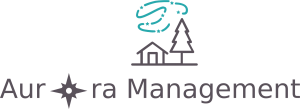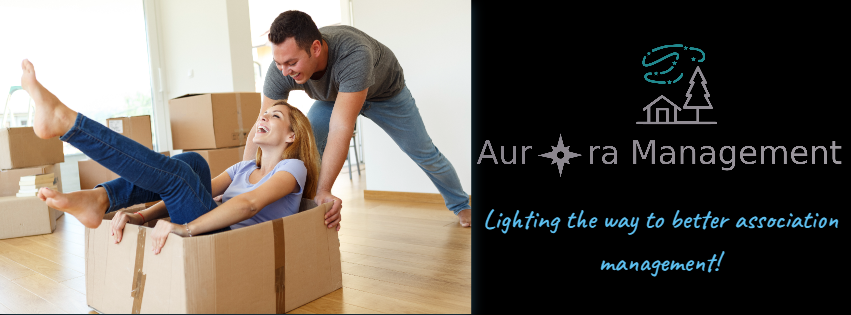As the annual budgeting season approaches, many Homeowners Associations (HOAs) face the critical task of creating a budget that ensures the smooth operation and financial health of their community. An effective budget not only supports the maintenance and improvement of shared spaces but ensures that the community operates smoothly, addresses residents’ needs, and prepares for future expenses. Here’s a comprehensive guide to help your HOA navigate through the essential steps for effective annual budget preparation, helping you keep your community on track and financially sound.
1. Understand the Financial Landscape
Before diving into the numbers, it’s essential to grasp the current financial status of the HOA. This initial review provides a baseline for making informed budgetary decisions. This involves:
- Reviewing Financial Statements: Examine the previous year’s financial statements, including balance sheets, income statements, and cash flow reports. This will give you a clear picture of income, expenditures, and identify any outstanding liabilities.
- Reviewing Invoices: In addition to looking at the financial statements prepared by the association or the management company, invoices should also be reviewed to find trends in rates being charged. This will help identify, not only rates going up and by how much, or if there are any errors in what was charged to the HOA or if credits were applied.
- Assessing Reserve Funds: Evaluate the reserve funds to ensure they are adequate for future repairs and replacements of major community assets. A healthy reserve fund helps avoid sudden, large assessments or special levies.
2. Define Budget Objectives and Priorities
Setting clear objectives for the budget helps in prioritizing expenditures and aligning them with the community’s needs. Common budget objectives might include:
- Maintaining and improving community amenities: Pools, parks, and clubhouses.
- Addressing repair and maintenance needs: Streets, landscaping, and infrastructure.
- Building or replenishing reserve funds: To cover major repairs and unexpected expenses.
- Minimizing or avoiding increases in HOA dues: To ensure affordability for residents.
3. Gather Input from Stakeholders
Engage with residents, board members, and committees to gather input on budget priorities. Surveys, town hall meetings, and direct communications can help identify community needs and concerns. This collaborative approach ensures the budget reflects the desires and requirements of the community.
4. Estimate Revenue Sources
Accurate revenue forecasting is critical for budgeting. The primary revenue source for most HOAs is the collection of monthly assessments, or also frequently referred to as dues, from homeowners. In addition to the monthly assessments, there are other assessments that can be levied to homeowners for a variety of reasons, depending on why money is being raised for the association. Project the expected revenue based on current assessments, anticipated changes in the number of homes, and any adjustments to fees. Your primary sources of revenue typically include:
- Monthly Assessments: Estimate the total revenue from homeowner assessments, taking into account any anticipated changes in the number of homes or adjustments to the assessment amount.
- Reserve Income: Reserve income comes from the operating account as an expense but is added as income on the reserve account side of the budget. Reserve funds are critical for handling significant repairs or replacements that arise infrequently but require substantial investment. Review the reserve study (a long-term plan for maintaining common property) to ensure it aligns with your current financial status and anticipated expenses. Adjust contributions to the reserve fund as needed to meet future obligations.
- Special Assessments: These one-time fees are charged when unexpected expenses arise. They are usually a last resort for HOAs, and are separate from regular assessments and typical HOA costs. Special assessments can be charged for emergencies, such as natural disasters, accidents, or widespread flood damage. They can also be charged if the HOA fails to budget properly for the year, or something raises significantly that was unforeseen when budgeted, such as insurance premiums. The amount of the assessment is determined by the cost required to cover the unexpected expense, and most associations divide the costs equally among all homeowners. Special assessments can be paid in a single installment or incorporated into regular monthly payments until the assessment is paid off. These need to be added to the budget to ensure accurate income to expense ratio and to offset an expense on the budget a special assessment is associated with.
- Additional Income: Include any additional income such as rental fees from community facilities, advertising income, and coin laundry machines, ext.
Please Note: Some additional income that the community may collect as a course of its business that shouldn’t be included as income for budgeting would be late charges, fines for violation of HOA rules, interest on late payments, or interest for investments. The reason that these items should not be included is because it is difficult to budget accurate numbers and the community cannot be reliant on homeowners paying their assessments late or violations of the any community rules to operate their community. If these items are added to the budget as income to the community, they should be surplus over what is needed to operate the association.
Lastly, any interest income for investments shouldn’t be documented until the investment matures and is made available to the community and will be added to their operating or reserve accounts. Forecasting this revenue early shouldn’t be done if an investment isn’t maturing the year it is being budgeted for or cannot get the accurate amount of interest at maturity. An example of an investment that could be budgeted for would be Certificate of Deposits (CDs) that is maturing the coming year. There are also investments, such as mutual funds or investments through a financial advisor, that shouldn’t be budgeted for as those numbers can change frequently and are not accounted for until those investments are sold on the market.
5. Forecast Expenses
Categorize and forecast all potential expenses. Common categories include:
- Operating Costs: These are day-to-day expenses like landscaping, janitorial services, security, and utilities
- Maintenance and Repairs: Routine and emergency repairs for common areas, facilities, infrastructure, and equipment
- Insurance: Coverage for property, liability, directors and officers, and other necessary insurance, based on the governing documents.
- Administrative Costs: Include expenses related to management fees, office supplies, legal services, and other professional services.
- Reserve Contributions: Set aside a portion of the budget to maintain or grow your reserve fund, as recommended by your reserve study.
- Capital Improvements: Planned upgrades, new amenities, or capital projects the HOA would like to invest in the community (these are additional funds not included in the reserve contribution. Reserve contributions only include existing infrastructure or amenities being reserved for in the reserve study).
Don’t forget to include a contingency fund to address unforeseen costs or emergencies.
6. Prepare the Budget Document
Compile all the revenue and expense estimates into a detailed budget document. This should include:
- A summary of projected income and expenses.
- A breakdown of each expense category.
- Forecasts for reserve fund contributions and expenditures.
- Any planned capital projects and their associated costs.
Ensure the document is clear, transparent, and accessible for review by the board and homeowners.
7. Present the Budget to the Board
Before finalizing, present the budget to the HOA board for review and feedback. The board’s input is crucial in refining the budget and making necessary adjustments. Address any concerns or suggestions to ensure the budget meets the community’s needs and complies with legal and financial regulations.
8. Communicate the Budget to Homeowners
Once approved by the board, communicate the final budget to homeowners. It is very important to give homeowners adequate time to see the budget before it takes effect to ensure they know the monthly assessments for the next year. A good rule of thumb for this notice is at least 30 days written notification, but you should always reference any relevant state statutes in the event they require more notice. In addition, provide a summary that highlights key aspects of the budget, including changes in dues, significant expenditures, and any planned improvements. Transparency helps build trust and ensures that homeowners understand the rationale behind budget decisions.
9. Monitor and Adjust Throughout the Year
Budgeting is not a one-time event. Regularly monitor actual income and expenses against the budgeted figures. This ongoing oversight allows for timely adjustments if financial conditions change or if unexpected expenses arise. Periodic reviews help ensure the budget remains accurate and responsive to the community’s needs.
- Track Spending: Regularly review actual expenditures against the budget to identify any variances. Budgeting is an essential tool to ensure that the community is spending within their approved spending limit, but can also be used to identify future concerns.
- Adjust as Needed: Budgets shouldn’t be changed regularly after they are built and finalized unless there are significant adjustments if significant changes in revenue or expenses occur. If changes do occur be prepared to make adjustments
10. Plan for the Future
Finally, use insights from this budgeting cycle to plan for future years:
- Evaluate Long-Term Needs: Consider long-term projects and their financial impact on future budgets.
- Review Reserve Studies: Update your reserve study regularly to ensure your long-term funding goals align with community needs. Use what was invested or delayed during this budget or later budgets to know what still needs to be done in the future.
Conclusion
Preparing an annual budget for an HOA is a multifaceted process that requires careful planning, collaboration, transparency, and ongoing oversight. By following these steps, you can create a budget that supports the community’s goals, maintains financial stability, and addresses both immediate needs and long-term objectives. A well-managed budget not only enhances the quality of life in the community but also fosters trust and satisfaction among homeowners. Happy budgeting!


